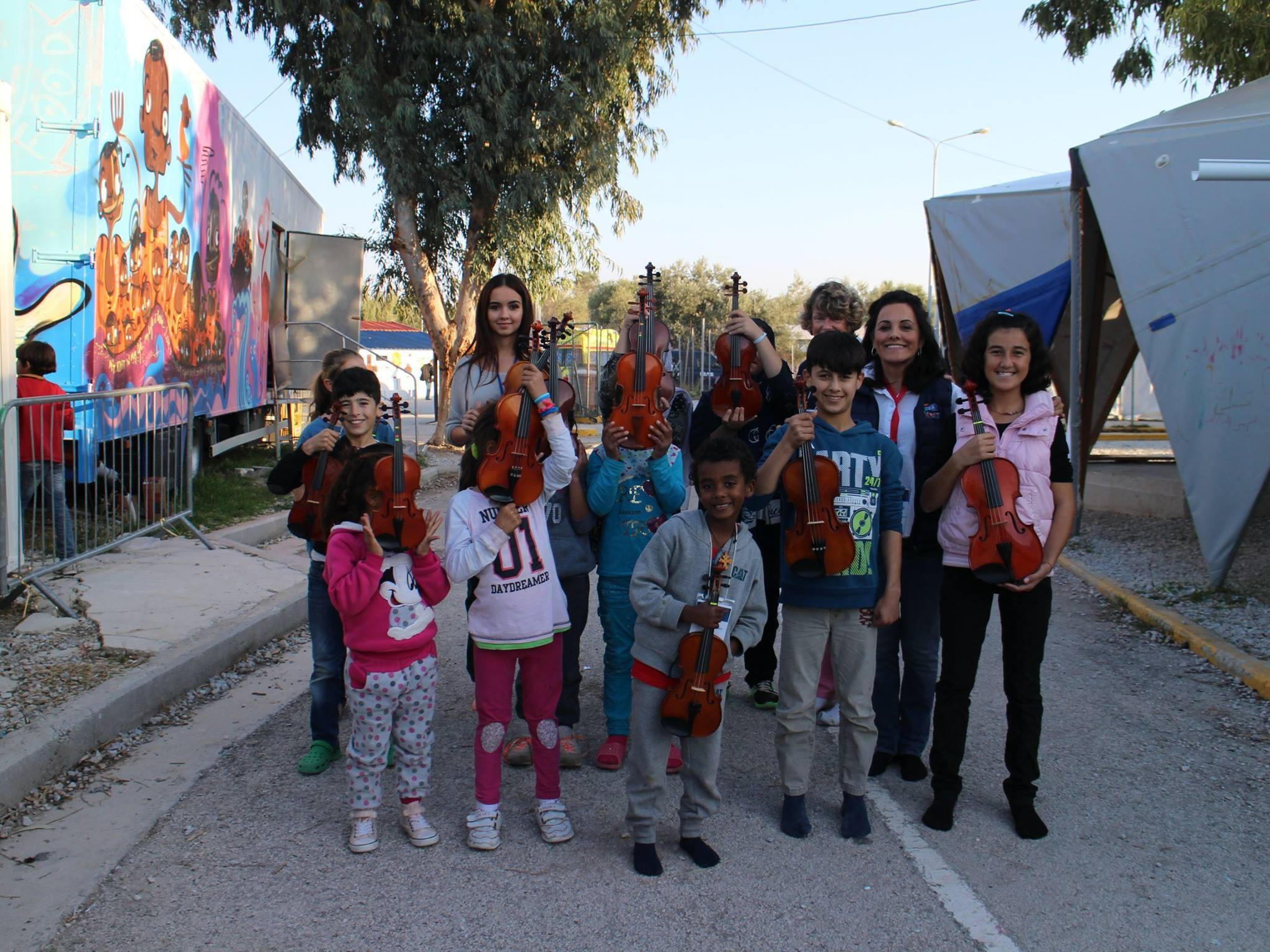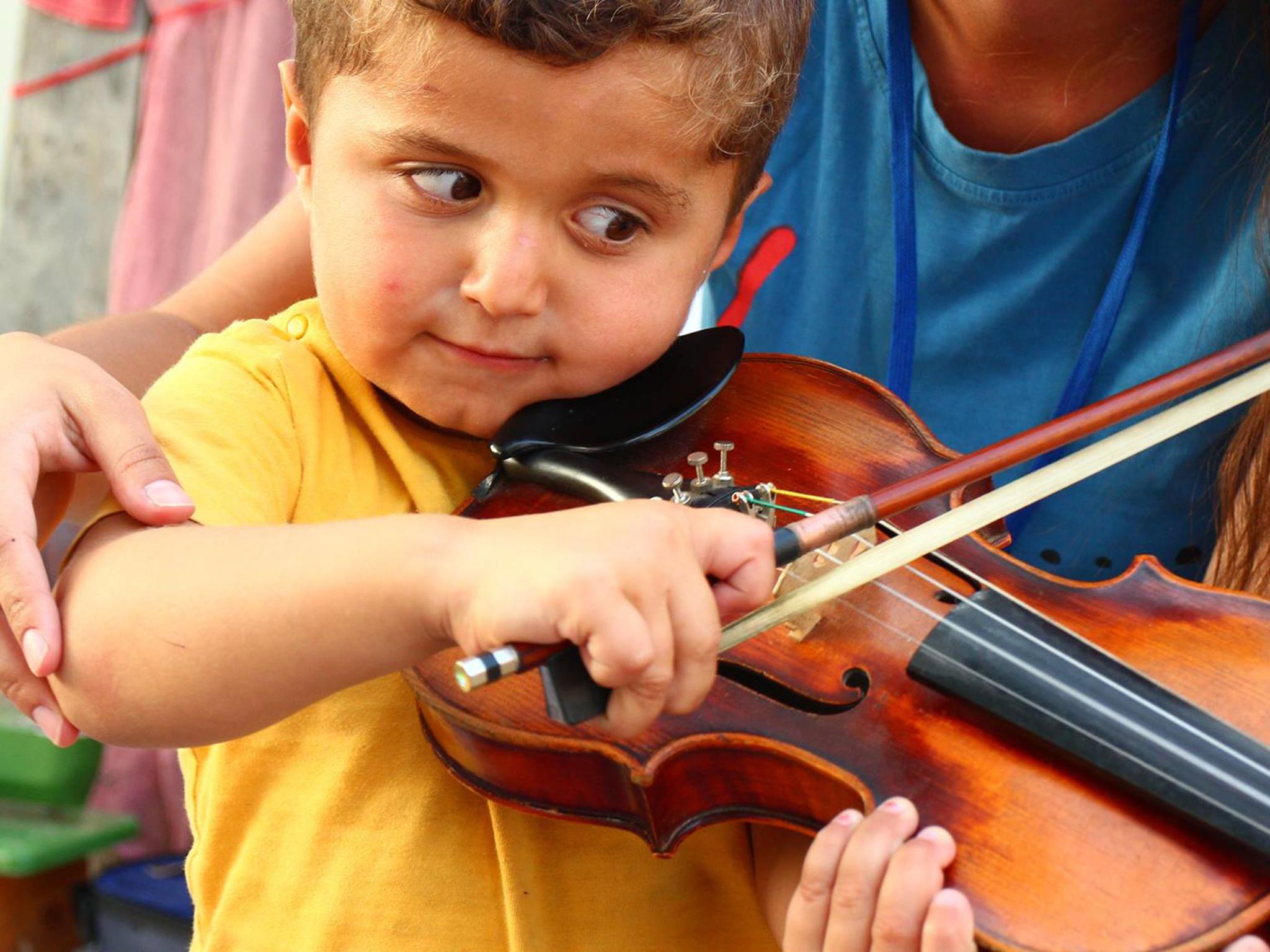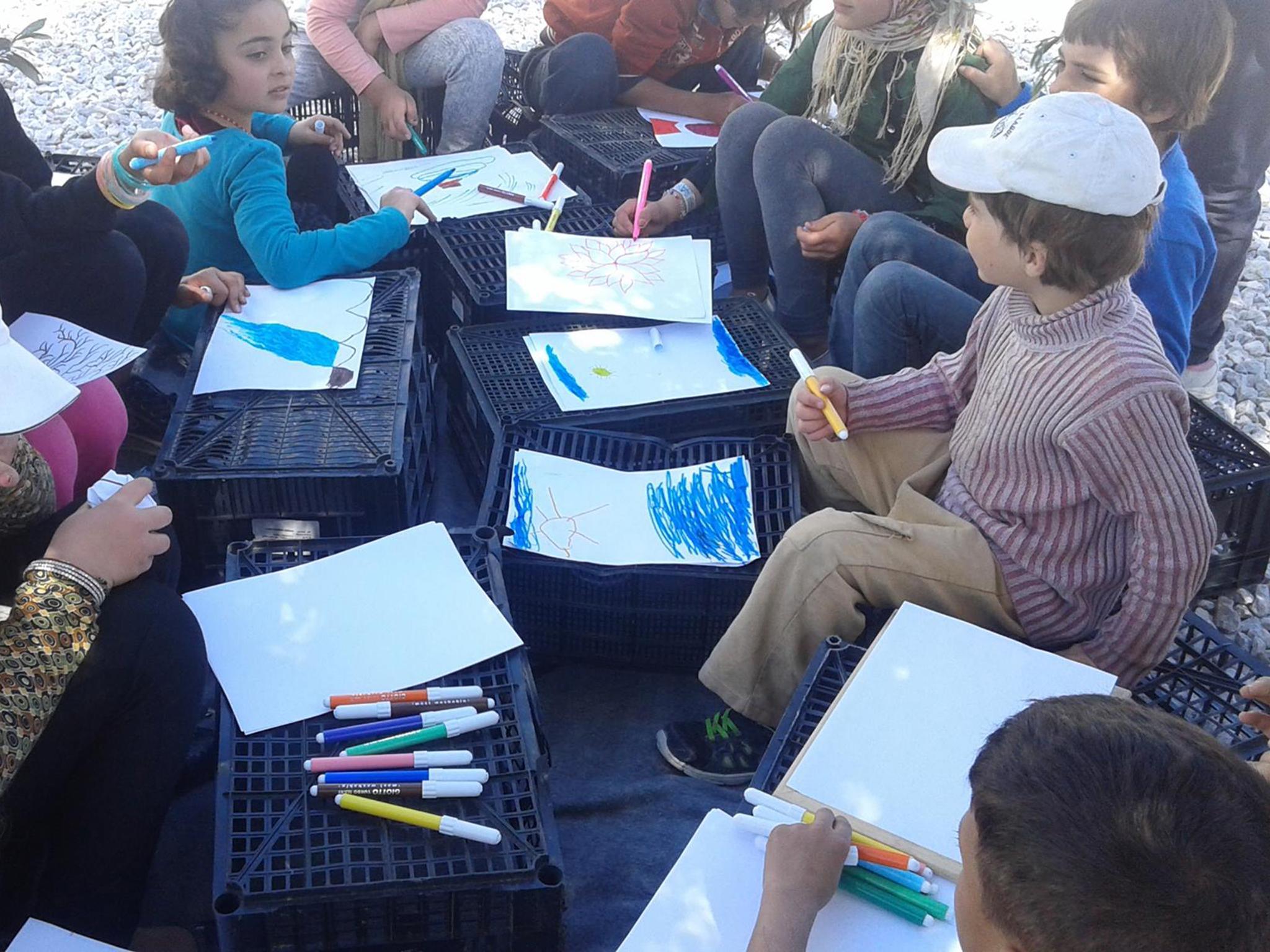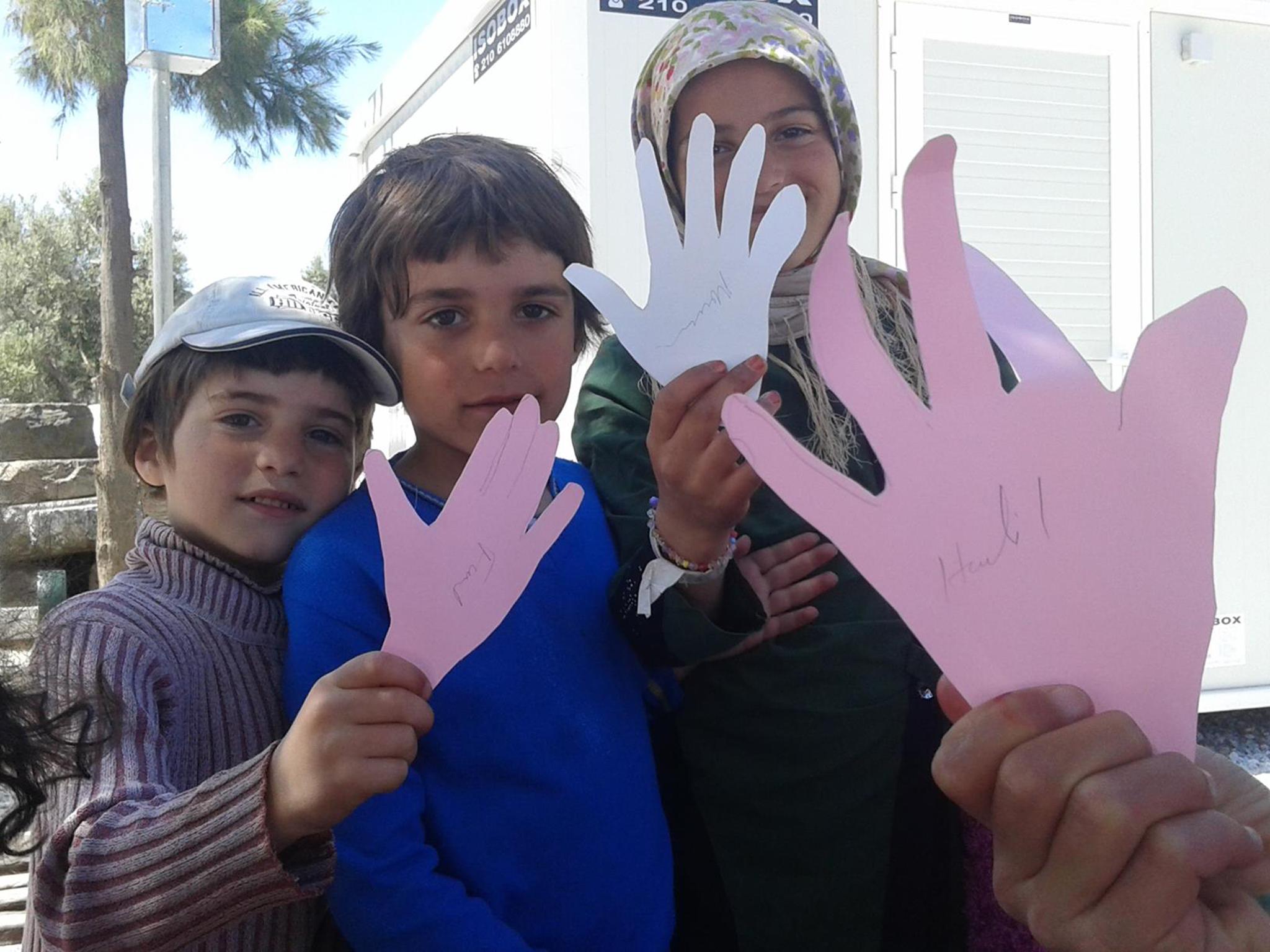Lesbos is bringing hope and dignity to refugees living in limbo through art, music and creative initiatives

Your support helps us to tell the story
From reproductive rights to climate change to Big Tech, The Independent is on the ground when the story is developing. Whether it's investigating the financials of Elon Musk's pro-Trump PAC or producing our latest documentary, 'The A Word', which shines a light on the American women fighting for reproductive rights, we know how important it is to parse out the facts from the messaging.
At such a critical moment in US history, we need reporters on the ground. Your donation allows us to keep sending journalists to speak to both sides of the story.
The Independent is trusted by Americans across the entire political spectrum. And unlike many other quality news outlets, we choose not to lock Americans out of our reporting and analysis with paywalls. We believe quality journalism should be available to everyone, paid for by those who can afford it.
Your support makes all the difference.As one of the main arrival points for people seeking asylum in Europe, the Greek island of Lesbos is home for thousands of refugees who are being held by European authorities at the doors of the continent.
Although supposedly a passing point, refugees are staying in Lesbos’s camps for several months. As reported by Doctors Without Borders (MSF), recent changes in EU policies that have been preventing the entrance of refugees in Europe and restricting the criteria for identifying people as ‘vulnerable’ have led to vulnerable people not being identified as such.
“Given that certain medical conditions require tests and treatments that are not available on the Greek island, this shift in policy is of great concern to us as it clearly limits vulnerable people’s timely access to much needed healthcare.”
The lack of resources and “drastic deterioration of the care and protection for vulnerable people” have led to extremely high levels of mental health symptoms amongst refugees, MSF reports.
Many volunteers and organisations’ work in camps and the opening of community centres, however, give a glimpse of hope to the lives of refugees stuck in such vulnerable situations. With many of the islanders being nominated for the Nobel Peace Prize for their solidarity, Lesbos has been home to a large number of artistic initiatives and communities helping refugees with their own projects.
Music, art, photography, craft making and a flash mob project have been growing from people’s stories, struggles and energy.

Currently based in the camp of Kara Tepe, the initiative Angels Relief Team, which is part of the charitable organisation Art Bridges, is a volunteer-based organisation specialising in providing music and art education to sensitise children to artistic expression. Helping young refugees in the three main vulnerable communities in Lesbos and around Greece, they have been carrying out activities that range from instrument teaching, pottery workshops to design and sewing workshops to help them express their emotions.
The activities offer a chance to share their artistic expression, which promotes respect between children and their social integration, and has also reduced tensions amongst different ethnic groups that live in the communities. Angela Maria Arbeláez, who founded the project with her daughter María Francisca Rocca, celebrated. “These children do not longer see themselves as refugees, but restore self-confidence by becoming the protagonists of their own artistic expression”, she said.
Arbeláez is a fine art historian and her daughter a violinist and performance artist. They count on music teachers and pedagogues and have collaborated with numerous renowned artists from around the world, as well as received donations from many British, Irish and Spanish supporters amongst others.
The practises have been helping children recover the joy which was taken away by their past experiences, who paint with brighter and happier colours. “It’s lovely to see again joy in some of the pictures”, Maria Magee, ART volunteer told TakePart.
Creativity is bringing back the energy amongst refugees and their children, particularly, which has significantly improved the daily experiences in the camps. “We have identified as many as about 2,000 minors who have benefited from the creative activities. We worked with a group of children who came here scared, with a stooped posture. You can now see their smiles returning to their faces and how their little bodies have regained self-confidence,” Arbeláez s‘Art offers a chance to enter a magic space to dream, imagine… they can draw the house they would like to live in’aid.

Lesvos Solidarity, an open refugee camp based in the island, also offers creative activities engaging with refugees by singing, painting or craft making, and runs the MOSAIK support centre together with the NGO Borderline-Europe. The centre has provided cultural awareness events, choirs, theatre groups and upcycling and weaving workshops, providing dignity to a life of waiting that being at the limbo of Europe entitles.
“Amine arrived with 90 per cent of her body burnt after fleeing her home in Aleppo, Syria. This affected her severely. She was shy, distressed and uncomfortable in her own skin,” Arbeláez said. Sharing moments with other children, she said, promoted mutual respect, and she became much more active and happier. “She recovered part of her self-esteem.”
As reported by TakePart, refugee families are seeing the creativity bringing happiness to their children: “now that they have the violin, the music, my children are very happy”.
Bobby Loyd, visual artist and HCPC registered art therapist at Art Refuge UK, who is currently working with vulnerable people in Calais, stressed the importance of the safe space art offers to refugees. “They are treated as ‘other’, as different, as criminals. Art offers them a chance to feel heard, witnessed, and allows them to enter a magic space to dream, imagine… they can draw the house they would like to live in.”
They are not trained art therapists, but volunteers in refugee camps promoting art amongst refugees to facilitate the expression of feelings and emotions that might be held back and not easily verbalised. “We don’t ask them, we just let them express themselves as they wish, because it’s the process of the arts that is very important,” Emelda Graham, volunteer teacher at Pikpa Camp told TakePart. According to MOSAIK, humanitarian aid has provided assistance “necessary for people to survive, but not, in the words of some refugees, ‘to remain human’”. Creative activities have helped children and adults find a space of security in their limbic situations in refugee camps. “We are passionate about these initiatives”, Loyd said.

The island has also attracted a number of art initiatives that aim at raising awareness of the precarious situations that refugees are stuck in. Amnesty International organised last week, together with Lesvos Solidarity, a flash mob as a protest to the EU-Turkey deal, which has since 2016 trapped refugees on the Greek islands and prevented them from accessing the European continent.
The famous Chinese artist Ai Wei Wei also set up his art studio in the island last year to raise awareness about the refugee crisis through a photography-based art project. “As an artist, I have to relate to humanity’s struggles... I never separate these situations from my art,” Wei Wei told the Guardian.
Join our commenting forum
Join thought-provoking conversations, follow other Independent readers and see their replies
Comments